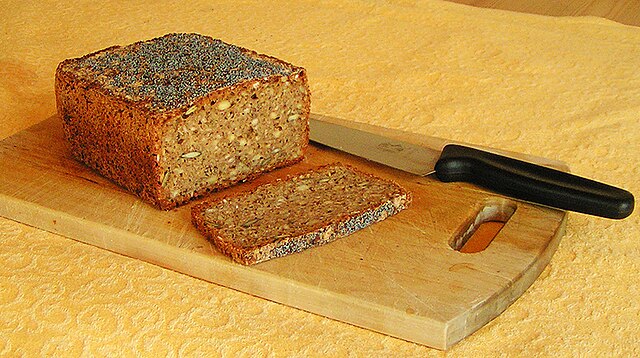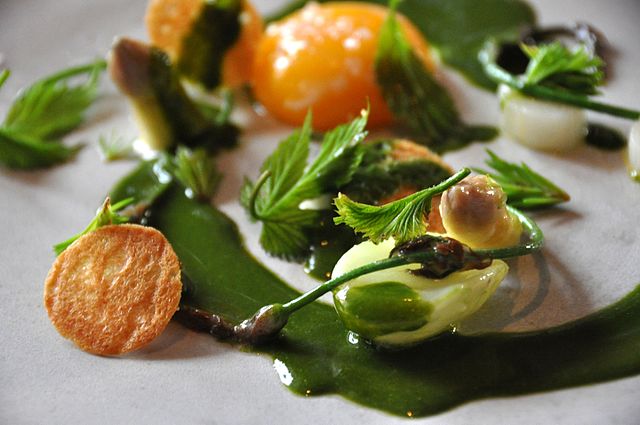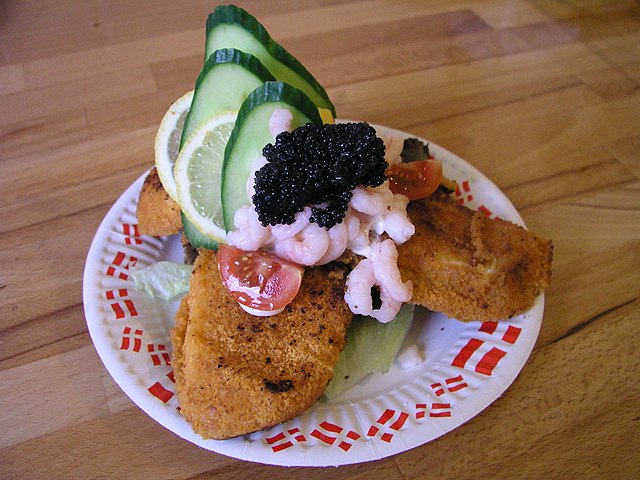Danish cuisine originated from the peasant population's own local produce and was enhanced by cooking techniques developed in the late 19th century and the wider availability of goods during and after the Industrial Revolution. Open sandwiches, known as smørrebrød, which in their basic form are the usual fare for lunch, can be considered a national speciality when prepared and garnished with a variety of ingredients. Hot meals are typically prepared with meat or fish. Substantial meat and fish dishes includes flæskesteg and kogt torsk with mustard sauce and trimmings. Ground meats became widespread during the industrial revolution and traditional dishes that are still popular include frikadeller, karbonader and medisterpølse. Denmark is known for its Carlsberg and Tuborg beers and for its akvavit and bitters, but amongst the Danes themselves imported wine has gained steadily in popularity since the 1960s.
Frikadelle (meat balls) with rugbrød (rye bread) and gherkins
A loaf of Danish rye bread (rugbrød)
New Nordic dish made from local ingredients exclusively. "White asparagus with poached egg yolk and sauce of woodruff" at Restaurant Noma.
Bread with cheese and salami, soft-boiled egg and coffee; a typical everyday breakfast.
Smørrebrød, smørbrød "butter bread" (Norwegian), or smörgås "butter goose" (Swedish), is a traditional open-faced sandwich in the cuisines of Denmark, Norway and Sweden that usually consists of a piece of buttered rye bread, topped with commercial or homemade cold cuts, pieces of meat or fish, cheese or spreads, and garnishes.
A selection of Danish smørrebrød. Here, dark rye bread covered with salmon topped with either remoulade or prawns. In the background are other kinds.
Smørrebrød. Left: Roast beef with remoulade, tomato and shredded horseradish on Danish rye bread; right: egg, prawns, lemon and mayonnaise on white bread
Dark rye bread topped with breaded fish, salad, cucumber, shrimps, black lumpfish roe, and tomato







